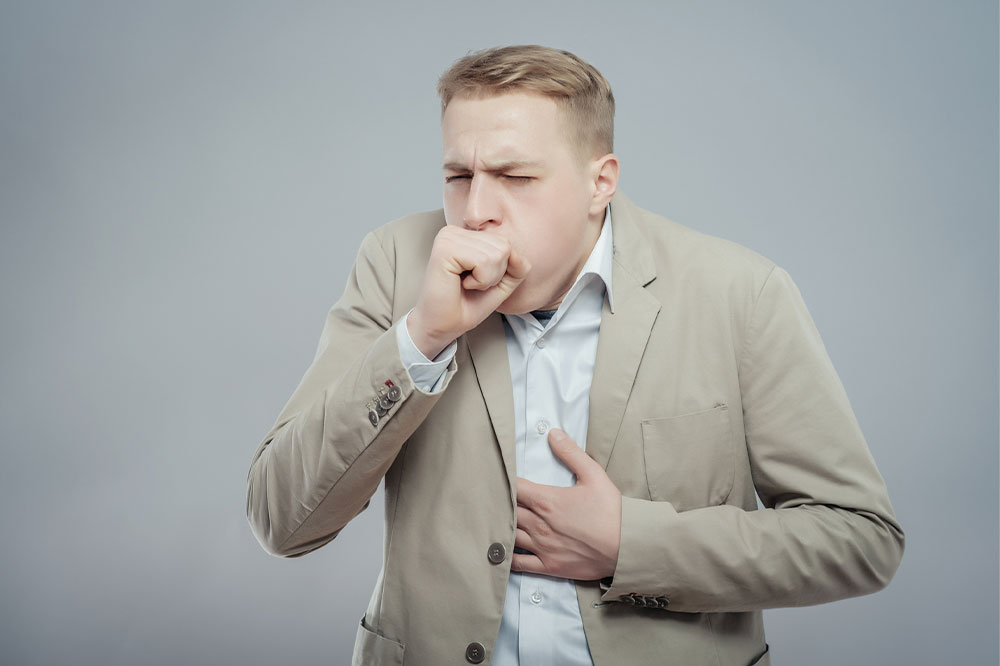Lung cancer – Signs, diagnosis, and management options

Mostly observed in those above 65 years, lung cancer starts from the small air sacs (alveoli) or the airways (bronchi or bronchioles). Its symptoms are not apparent in the early stages and are only diagnosed in the advanced stages. Being aware of the signs can help in seeking early diagnosis and treatment. Here’s all an individual needs to know about silent signs of lung cancer, its diagnosis, and various treatment options.
Signs and symptoms of lung cancer
The signs of lung cancer are often similar to that of other health disorders related to the lungs. So it becomes difficult to get a proper diagnosis in the early stages. However, it is best to take preventive measures and consult a doctor whenever these symptoms appear and do not go away for a long time.
Persistent cough and hoarseness that does not go away
Trouble breathing or shortness of breath
Discomfort or pain in the chest
Frequent instances of wheezing
Coughing up blood
Chronic fatigue or extreme tiredness that doesn’t improve even after resting
Gradual changes in eating habits due to appetite loss, difficulty swallowing, abdomen pain, vomiting, or nausea
Sudden formation of lumps or swelling anywhere in the body
Chronic pain that is recent and caused due to unknown reason
Changes in texture and color of skin where lumps have formed. This can include patchiness, scaliness, the formation of bumps or sores, and even bleeding.
Unusual bruising or bleeding
Sudden changes in bowel movements with frequent constipation or diarrhea that don’t get better
Changes in bladder movement, including pain while passing urine or the presence of blood in the urine
Experiencing night sweats and fever
Frequent headaches
Issues with vision or hearing
Pain, numbness, bleeding, or sores in the mouth
The signs mentioned above are some of the common ones observed in the case of lung cancer. However, there can be many other symptoms as well. So it is important to be aware of any sudden or major changes in the body’s functioning or how one feels. If these changes worsen or last longer, one must consult a primary care doctor as soon as possible. This will ensure timely diagnosis and treatment without waiting for the symptoms to worsen.
How is lung cancer diagnosed?
The diagnosis of lung cancer involves multiple steps. It usually starts with a visit to the healthcare provider. The healthcare provider will ask one about the signs and symptoms one may be experiencing, one’s medical history, and one will then undergo a physical exam involving the heart and lungs. Since the symptoms of lung cancer are often similar to other health disorders, one will be recommended to get blood tests and a chest x-ray. If the doctor suspects an individual may have lung cancer, the following steps of diagnosis will involve undergoing further imaging tests and biopsy.
Here are further details on the tests used to diagnose lung cancer:
Blood tests
These tests do not detect cancer but help the doctor understand how an individual’s body’s vital parameters are functioning.
Imaging tests
These include chest X-rays and CT/PET scans. The results from these tests help the doctor see whether there have been any changes in one’s lungs.
Biopsy
This is a small procedure that is used to surgically remove samples of fluids and tissues from the lungs. These samples are studied under a microscope to confirm whether one has lung cancer. A biopsy can provide valuable information about the type and stage of lung cancer. Some common types of biopsy include needle biopsy, bronchoscopy, thoracoscopy or video-assisted thoracic surgery (VATS), thoracentesis, endobronchial ultrasound or endoscopic esophageal ultrasound, and mediastinoscopy or mediastinotomy.
Molecular tests
These tests are part of biopsy procedures. The samples extracted during the biopsy are tested to check for mutations or gene changes. These tests help to determine the most effective treatment options to target cancer cells and improve the patient’s health.
Common treatment options for lung cancer
The treatment options usually depend on the symptoms of lung cancer, the type of lung cancer, one’s overall health, and the stage of cancer. Once all the factors have been determined, an oncologist or medical team will devise a plan of action to remove the cancerous cells from one’s body and help one in the recovery process. Here are some of the common treatment options that are generally recommended.
Surgery
Lung cancer that has not spread or that is restricted to just one tumor can be treated with surgery alone. The process involves removing the tumor and surrounding tissues to avoid the recurrence of the cancer. Sometimes, a part of the lung or the entire lung is removed to prevent the cancer from returning.
Radiofrequency ablation
This is a minimally invasive procedure. It uses high-energy waves or electrical energy to destroy cancerous cells with high heat. This is used when tumors have formed close to the outer edges of the lungs. It helps to control tumor growth and prevent recurrence. In some cases, it is also used in palliative care to alleviate pain.
Radiation therapy
Radiation therapy is used on its own and, most times, along with surgery to remove cancer cells. This treatment method involves using high-energy beams or radiation waves to destroy cancer cells. If lung cancer has reached a very advanced stage, radiation is used as palliative care to relieve pain. This is done by shrinking the tumors.
Chemotherapy
This medical treatment option is commonly used in combination with other forms of treatment for maximum effectiveness. This treatment involves the administration of various chemicals and compounds into the body through an intravenous (IV) line. Chemotherapy destroys cancer cells and prevents their further multiplication, ultimately leading to a reduction in tumor size and the potential for remission.







